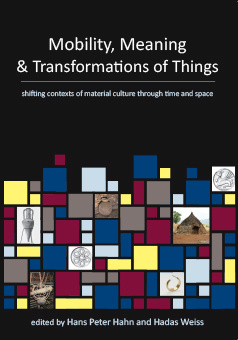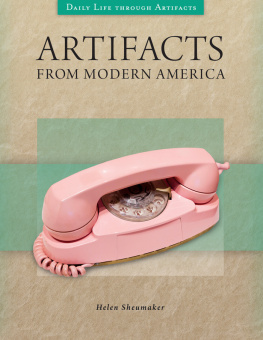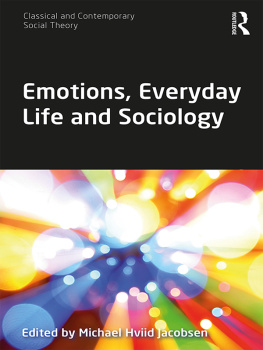MOVING SUBJECTS, MOVING OBJECTS
Material Mediations: People and Things in a World of Movement
Edited byBirgit Meyer (Department of Religious Studies and Theology, Utrecht University) and Maruka Svaek (School of History and Anthropology, Queens University, Belfast)
During the last few years, a lively, interdisciplinary debate has taken place between anthropologists, art historians and scholars of material culture, religion, visual culture and media studies about the dynamics of material production and cultural mediation in an era of intensifying globalization and transnational connectivity. Understanding mediation as a fundamentally material process, this series provides a stimulating platform for ethnographically grounded theoretical debates about the many aspects that constitute relationships between people and things, including political, economic, technological, aesthetic, sensorial and emotional processes.
Volume 1
Moving Subjects, Moving Objects: Transnationalism, Cultural Production and Emotions
Edited by Maruka Svaek
Volume 2
Growing Artefacts, Displaying Relationships: Yams, Art and Technology amongst the Nyamikum Abelam of Papua New Guinea
Ludovic Coupaye
In Preparation
Objects and Imagination: Perspectives on Materialization and Meaning
Edited by ivind Fuglerud and Leon Wainwright
MOVING SUBJECTS, MOVING OBJECTS
Transnationalism, Cultural Production and Emotions
Edited by
Maruka Svaek

Published in 2012 by
Berghahn Books
www.berghahnbooks.com
2012, 2014 Maruka Svaek
First paperback edition published in 2014
All rights reserved. Except for the quotation of short passages for the purposes of criticism and review, no part of this book may be reproduced in any form or by any means, electronic or mechanical, including photocopying, recording, or any information storage and retrieval system now known or to be invented, without written permission of the publisher.
Library of Congress Cataloging-in-Publication Data
Moving subjects, moving objects : transnationalism, cultural production and emotions / edited by Maruka Svaek.
p. cm.
Includes bibliographical references and index.
ISBN 978-0-85745-323-5 (hardback) -- ISBN 978-1-78238-512-7 (paperback) ISBN 978-0-85745-324-2 (ebook)
1. Ethnopsychology. 2. Emotions. 3. Transnationalism. 4. Material culture. I. Svaek, Maruka.
GN502.M69 2012
306--dc23
2011046315
British Library Cataloguing in Publication Data
A catalogue record for this book is available from the British Library
Printed on acid-free paper
ISBN: 978-1-78238-512-7 paperback
ISBN: 978-0-85745-324-2 ebook
CONTENTS

Maruka Svaek
Fiona R. Parrott
Kathy Burrell
Eddy Plasquy
Timm Lau
Anne Sigfrid Grnseth
Sameera Maiti
Enrico Maria Mili
Maggie ONeill
Deborah Schultz
Leon Wainwright
Maruka Svaek
LIST OF FIGURES AND TABLES

Figures
Tables
ACKNOWLEDGEMENTS

The initial idea for this book came out of the conference Migrant Art, Artefacts and Emotional Agency that took place at Queens University, Belfast, in 2007. The conference was one in a series of three, funded by the AHRC in the Diasporas, Migration and Identities programme. Early versions of four chapters in this book were presented at that conference, namely chapters by Sameera Maiti, Deborah Schultz, Leon Wainwright and Maruka Svaek.
INTRODUCTION
AFFECTIVE MOVES:
TRANSIT, TRANSITION AND TRANSFORMATION

Maruka Svaek
We find it familiar to consider objects as useful or aesthetic, as necessities or vain indulgences. We are on less familiar ground when we consider objects as companions to our emotional lives or as provocations to thought.
Sherry Turkle
The principal aim of this volume is to explore the emotional dimensions of subject and object mobility. Mobility or transit (see below) are terms used to describe the different processes at play when people and things cross geographical, social and cultural boundaries as they move through time and space. Emotional dynamics are part and parcel of these processes. By exploring the different ways in which mobile individuals relate emotionally to changing material environments, and by investigating how transportable objects evoke feelings in distinct socio-geographical milieux, the book aims to contribute to recent debates about globalization, cultural production and emotions.
The contributors comprise seven anthropologists, two art historians, one historian and one sociologist, who draw on discussions that cut across the fields of anthropology, sociology, cultural studies and art history, and build on recent debates in emotions research. The chapters engage with theoretical perspectives that focus on the social and emotional agency of images and artefacts for example, those introduced by Freedberg (1989) and Gell (1998). The authors explore transnational experiences through the perspective of material culture, by analysing cases from sometimes diverse and sometimes strongly interconnected regions in Europe, Africa, the United States, Asia and the Caribbean.
The book addresses the theme by focusing on examples of object and subject mobility and emotional interaction. The first four chapters concentrate on the different ways in which distinct individuals and groups of migrants produce and interact emotionally with specific artefacts. The subsequent four chapters explore the capacity of material things to increase feelings of well-being and belonging. The three remaining chapters focus on artistic fields of production, and the ways in which mobile artists deal with and instrumentalize emotions in their work. This introduction will also outline numerous other themes connecting individual chapters and perspectives that are woven into the structure of the book.
Transit, Transition and Transformation
This introductory chapter presents the emotional dimensions of subject and object mobility within an overall conceptual framework that, as in previous works (Svaek 2007b, 2009), employs the terms transit, transition and transformation to investigate these processes. These terms help to shed light on the emotional significance of cultural and material production in an interconnected world.
Transit and Transition
To illustrate the use of the first two concepts, transit and transition, consider a necklace with a crucifix for sale at a Christian pilgrimage site. Buying the commodity, a passing pilgrim might identify the object as desirable, possibly aesthetically pleasing, and also as a religious artefact that symbolizes both his faith and the suffering of Christ. Perceived as a meaningful and sacred artefact it has the ability to evoke spiritual engagement. Although related to a wider religious doctrine, the objects meaning will become more personalized as it becomes part of the buyers life. At the same time, its fluctuating emotional efficacy will be shaped by the changing predicament and mood of its owner. In moments of crisis it may become a focus of intense prayer that stimulates feelings of hope and confidence, while at other moments it may be consciously hidden under clothing, or touched out of nervous habit, or simply forgotten about.
Next page





